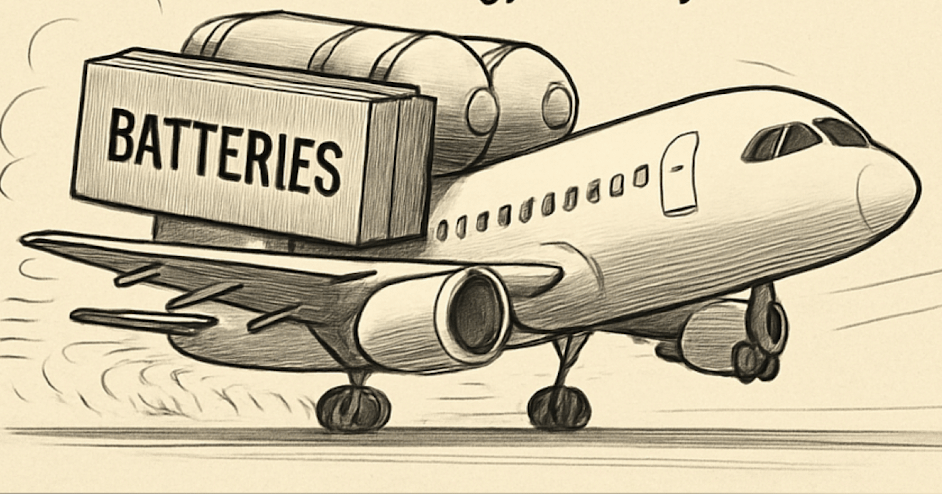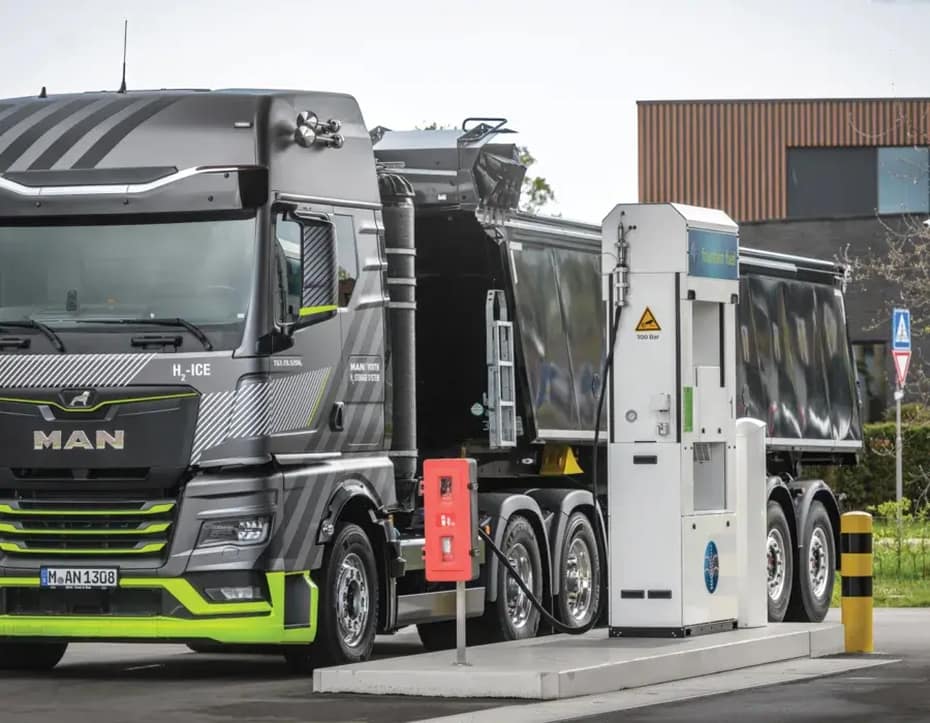Electric Aviation Fantasy: How an Entire Industry Ignored Physics
Electric aviation and hydrogen-powered flight were sold as the future of sustainable transport — but physics had other plans. The spectacular collapse of hydrogen and electric aircraft startups wasn’t a surprise to anyone who understood basic thermodynamics; it was inevitable. Yet investors, policymakers, and major manufacturers spent billions chasing impossible dreams while ignoring the simple maths that doomed these ventures from day one.

The Physics Reality Check for Electric Aviation
Battery-powered commercial aviation was always a non-starter, and the numbers are devastating. Current lithium-ion batteries deliver around 0.25–0.3 kWh/kg, while jet fuel provides 12 kWh/kg – meaning batteries are 40–50 times heavier per unit of energy. For an A320 carrying 42,000 lb of fuel for 3,300 nautical miles, an equivalent electric version would need over 1 million lb of batteries – exceeding the maximum take-off weight of any aircraft ever built.
Even the most optimistic projections show batteries reaching only 0.5 kWh/kg by 2050 – still 24 times worse than jet fuel. A Nature study estimated that electric aircraft would need 1,800–2,500 Wh/kg for 150–180 passengers – physically impossible with any known chemistry.
Hydrogen wasn’t much better. While hydrogen has excellent gravimetric energy density (120 MJ/kg vs 43 MJ/kg for jet fuel), its volumetric density is catastrophic – requiring four times more storage space than kerosene. Liquid hydrogen must be stored at –253 °C, expanding 850× when it vaporises. The infrastructure requirements alone would cost trillions, requiring a complete redesign of every aircraft and airport.
How the Hype Machine Captured Everyone
So how did hundreds of startups, billions in investment, and major aircraft manufacturers all get caught up in what was essentially a collective delusion?
The venture capital bubble was the primary driver. With interest rates near zero and excess capital seeking returns, investors poured money into anything labelled “sustainable aviation.” eVTOL companies alone raised $5–6 billion – nearly double the funding for all other sustainable-aviation technologies combined. The market was driven by “financial fundamentals flying out the window and being replaced with sentiment and momentum.”
The Gartner Hype Cycle explains the psychology perfectly. Electric aviation hit the “peak of inflated expectations” around 2020–2022, with projections of trillion-dollar markets and thousands of aircraft orders. Joby Aviation’s stock surged 233 % in three months in 2025, turning the CEO into a billionaire based purely on speculation. Hundreds of companies emerged simultaneously, creating an echo chamber of unrealistic expectations.
Government policies amplified the bubble. Programs like AFWERX and NASA funding provided hundreds of millions in grants to startups, creating artificial validation for fundamentally flawed concepts. The UK alone committed to developing hydrogen aviation infrastructure by 2025, despite the physics being insurmountable.
Major manufacturers got swept up too. Boeing and Airbus, who should have known better, launched hydrogen programs and made ambitious announcements. This gave credibility to the entire sector, encouraging more investment in what were essentially impossible projects.
The Inevitable Crash Back to Reality
2024 became the year of reckoning. Universal Hydrogen, once valued over $1 billion with 250 aircraft orders, shut down after burning through $100 million. Masten Space Systems filed for bankruptcy despite $60 million in NASA contracts. Volansi entered liquidation after raising $70 million. Even Air Products wrote down $3.1 billion and exited major hydrogen projects.
The regulatory reality check was brutal. Certification requirements for aviation are exponentially more stringent than automotive applications. Battery thermal runaway, hydrogen’s explosive nature, and infrastructure safety requirements created insurmountable barriers. The timeline for regulatory approval alone would take decades.
The infrastructure costs were staggering. Hydrogen aviation would require $1.7 trillion in infrastructure investment by 2050, with 90 % needed for off-airport systems. Even regional airports would need $10–100 million per facility for hydrogen handling. Battery aircraft would require massive grid upgrades and overnight charging capacity that doesn’t exist.
The Warning Signs Were Always There
Industry experts tried to warn everyone. In 2019, Airbus CTO Grazia Vittadini said “we should not expect electric aircraft anytime soon.” NASA studies in the 1970s already identified hydrogen’s fundamental limitations. Every physics textbook explained why energy density matters in aviation.
The rocket equation made battery scaling impossible – as battery weight increases, energy requirements rise exponentially. This wasn’t speculation; it was fundamental physics that venture capitalists either ignored or didn’t understand.
Successful electric applications – drones, eVTOLs for short urban flights, and small regional aircraft – were already proving the limitations. These applications work precisely because they’re short-range, low-payload, and accept massive weight penalties. They proved the rule rather than broke it.
The Real Lessons from Electric Aviation
The electric aviation bubble reveals how badly the innovation ecosystem can malfunction when hype overtakes physics. Billions were wasted on projects that violated basic thermodynamics while genuinely viable solutions like SAF were underfunded by comparison.
The physics limitations weren’t hidden knowledge – they were undergraduate-level calculations that anyone could verify. Yet groupthink, venture capital momentum, and policy wishful thinking created a reality distortion field that persisted for years.
This wasn’t innovation – it was delusion. Real innovation works within physical constraints to find creative solutions. Battery and hydrogen aviation ignored those constraints and hoped technology would magically overcome fundamental physics.
The collapse of hydrogen and battery aviation projects wasn’t a failure of execution – it was the inevitable result of pursuing physically impossible goals. The only surprise is that it took so long for reality to reassert itself.
Now the industry can finally focus on actually viable solutions like Sustainable Aviation Fuel (SAF), which work within the laws of physics rather than pretending they don’t exist.
Frequently Asked Questions
Why did electric aviation fail?
Energy density and infrastructure limits. Batteries are 40–50× heavier per unit energy than jet fuel, and hydrogen requires four times the storage volume. Physics sets the boundary conditions for flight.
Could new battery chemistries make electric aircraft viable?
Even with solid-state or lithium-air advances, densities above 1 kWh/kg are unlikely – still an order of magnitude below jet fuel. No known chemistry changes that math.
Is hydrogen viable for short-range aircraft?
Possibly for light aircraft or eVTOLs where cryogenic storage is manageable. But for commercial aviation, cost, volume, and safety constraints make it impractical.
What can actually decarbonise aviation?
Drop-in Sustainable Aviation Fuels (SAF), hybrid-electric regional aircraft, and efficiency improvements that cut fuel use within existing physics limits.
Sources
Full reference list including NASA, Nature, and Royal Aeronautical Society reports is maintained at TimHarper.net. Cited materials include: Faraday Insights (2024), Stanford University energy density studies, Airbus and IATA hydrogen fact sheets, and Royal Aeronautical Society analyses on the eVTOL bubble.


